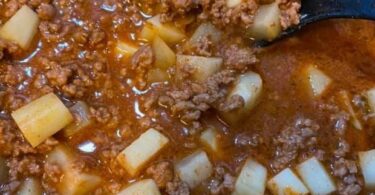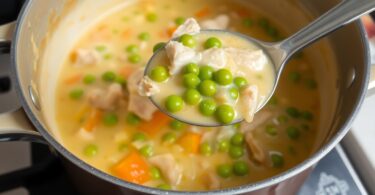“Spaghetti meat” is a term used to describe a specific quality issue in chicken meat. It is characterized by a loss of muscle fiber integrity, resulting in a frayed or spaghetti-like appearance, particularly in focal points within the chicken fillet. While it may look unusual, spaghetti meat does not pose any health or food safety risks to consumers.
Alesia Cooper, a concerned parent from Irving, Texas, recently encountered a bizarre sight while preparing chicken breasts for her family’s dinner. The chicken breasts, which she had purchased from Aldi, appeared to resemble spaghetti when she began cooking them. Perplexed by this unusual occurrence, Cooper took to social media to share a picture of the peculiar chicken breasts.
Accompanying the image was a caption that read:
“I was considering posting this, but since I had to see it, so do y’all,” indicating her surprise and desire to bring attention to the issue.
Cooper further explained:
“I was cleaning the meat as usual a few weeks ago when I returned to prepare my kids’ supper, and it turned like this.”
Speculation arose among commenters regarding the nature of the chicken breasts, with some suggesting that they could be lab-grown meat, a relatively new method of producing chicken. However, others disputed this claim, stating that the strange appearance of the chicken could be attributed to growth hormones and other drugs given to chickens to accelerate their growth.
Why Your Chicken Breasts Look Like Spaghetti!
Chicken breasts can sometimes take on a spaghetti-like appearance due to various factors, including the use of growth hormones and breeding practices in the poultry industry. Modern poultry farming methods often involve the use of growth-promoting hormones and selective breeding to accelerate the growth of chickens and increase their size.
One common practice is to use growth hormones to stimulate the rapid development of muscle tissue, particularly in the breast area, which is a desirable cut of meat. These hormones can lead to an increase in the size of the chicken breasts, sometimes causing them to appear elongated or spaghetti-like.
Selective breeding is another factor that can contribute to this phenomenon. Breeders select chickens with desirable traits, such as fast growth and large breast muscles, for breeding. Over time, this selective breeding can result in chickens with disproportionately large breasts compared to the rest of their body, leading to the spaghetti-like appearance of the meat.
Additionally, the way chickens are raised and fed can also impact the appearance of their meat. Chickens raised in crowded conditions or fed a diet high in certain nutrients may develop larger-than-average breasts, which can affect the appearance of the meat.
It’s important…
to note that while the spaghetti-like appearance of chicken breasts may be concerning to some consumers, it does not necessarily indicate that the meat is unsafe to eat.
However, if you have concerns about the quality or safety of your chicken, it’s always best to consult with a trusted source, such as a food safety expert or nutritionist.
Dr. Massimiliano Petracci of the University of Bologna explained that modern chickens are bred to reach market weight in significantly less time than before, leading to abnormal growth patterns. This rapid growth is largely driven by consumer demand for chicken products such as nuggets, wings, and sandwiches.
Dr. Michael Lilburn of Ohio State University’s Poultry Research Center emphasized the importance of consumer awareness regarding the origin and production methods of their food. He noted that while there is a vocal minority concerned about these issues, many Americans still prioritize affordability over food sourcing.
In conclusion
Cooper’s experience with the spaghetti-like chicken breasts serves as a reminder to be mindful of the food we consume and its potential implications for our health and well-being. As consumer demand continues to shape the poultry industry, it is essential to stay informed and make conscious choices about the food we eat.








